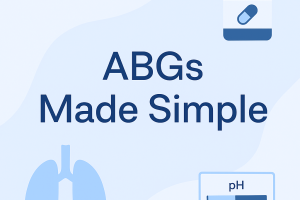The 5 Rights of Medication Administration: A Must-Know for NCLEX Success

Administering medications is a cornerstone of nursing care, and ensuring patient safety begins with mastering the Five Rights of Medication Administration. These principles reduce the risk of errors and protect patients from harm. Let’s break down each one to help you ace this topic for the NCLEX and apply it effectively in practice.
1. Right Patient
Before administering any medication, confirm that you’re giving it to the correct patient. Use at least two patient identifiers, such as:
- Name
- Date of Birth
- Medical Record Number
NCLEX Tip: Expect questions on how to handle situations where a patient cannot verbally confirm their identity (e.g., pediatric or unconscious patients). Barcode scanning technology and wristbands are often included as safety measures.
2. Right Drug
Ensure the medication you’re giving matches the physician’s order. Triple-check:
- Medication name (watch out for look-alike and sound-alike drugs)
- Prescription details
NCLEX Tip: Be prepared to handle scenarios involving unfamiliar medications. Nurses should always clarify ambiguous orders and consult the drug guide if necessary
3. Right Dose
Calculate the correct dose for the patient. Verify:
- That the ordered dose aligns with safe dosage ranges for the patient’s age, weight, and condition.
- Accuracy in unit conversions, especially with pediatric patients.
NCLEX Tip: Be ready to solve dosage calculation questions, including IV infusion rates and weight-based dosages.
4. Right Route
Confirm the appropriate route of administration, whether it’s:
- Oral (PO)
- Intravenous (IV)
- Subcutaneous (SC)
- Intramuscular (IM)
NCLEX Tip: Expect case-based questions on scenarios like what to do if a patient cannot take oral medications due to nausea or vomiting. Nurses must clarify alternate routes when needed.
5. Right Time
Administer medications at the correct time, considering:
- Standard scheduling protocols (e.g., every 8 hours)
- Time-sensitive medications (e.g., antibiotics, insulin)
- Food interactions (e.g., meds to be taken on an empty stomach)
NCLEX Tip: Understand how to prioritize medications based on urgency, such as giving pain relief or antihypertensives promptly.
Beyond the 5 Rights: The 6th and 7th Rights
While not traditionally included, some systems expand the list to include:
- Right Documentation: Always document immediately after administration, including any patient reactions or adverse effects.
- Right to Refuse: Patients have the right to refuse medications, and nurses must respect their autonomy while educating them about the potential risks.
Conclusion
Mastering the Five Rights is vital for safe nursing practice and NCLEX success. By applying these principles and being vigilant, you’ll ensure patient safety while building confidence in your nursing skills.
Stay tuned for more high-yield NCLEX topics! Share your thoughts or questions about this article in the comments below.






